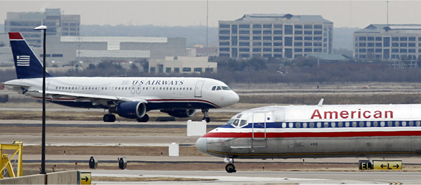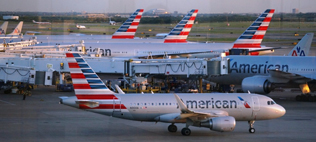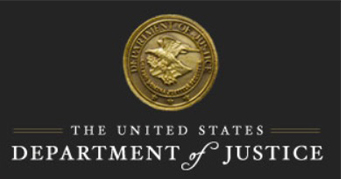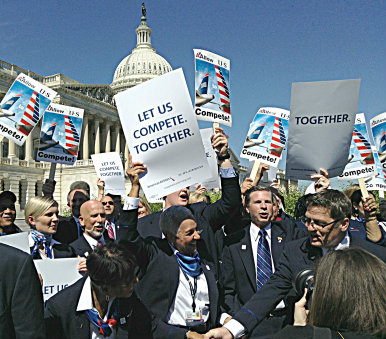© 2014 The Texas Lawbook.
By J. Bruce McDonald
Special Contributing Writer to The Texas Lawbook
(June 25) – The merger of American Airlines and US Airways may be the last combination of large U.S. air carriers for a long time. But had the Justice Department been successful in its challenge to their deal, these airlines still would be separate. Preventing this merger actually would have left passengers with less competition, not more.
This transaction brought a little of everything one might see in a government merger review. The combination was proposed in an industry that already had seen several mergers. It was intensely investigated by the U.S. Department of Justice. Several State attorneys general joined the investigation. The European Union also looked into its effect on U.S.-Europe competition. The U.S. and States brought a lawsuit to challenge the deal and were prepared to litigate.

After a very fast pretrial schedule, the case settled with an agreement that the airlines would divest some assets at certain airports. On top of this, one of the airlines was in bankruptcy and every event was closely watched in the press. Meanwhile, a group of plaintiffs filed a private action challenging the merger, and that litigation continues.
Getting this deal past the government and ready to close highlights important lessons for any merger that may face antitrust opposition.
First, the resulting lawsuit illustrated the contrast between a Washington agency investigation and play-to-win litigation against the government.
Second, it shows the importance for each side to have the facts that support its vision of why the proposed transaction is procompetitive for consumers (for the merging parties) or an anticompetitive menace (for the government) – because the litigation outcome will turn on the facts.
Third, especially because in a complex industry being scrutinized under a specialized legal regime, success for the airlines absolutely depended on a unified effort among clients, inside counsel, and outside counsel.
Background
Since the United States deregulated its airline industry in 1978, the industry has changed dramatically. The “legacy” airlines have developed hub-and-spoke networks, allowing them to serve passengers from more cities to more destinations. A number of these merged to expand their networks and reduce costs: Delta/Northwest and United/Continental were the most recent of those mergers.
New competition has entered in the form of “low cost carriers” (LCCs), so called because they do not carry the historical labor and network costs of the legacy airlines; Southwest Airlines has been the most successful of the LCCs. In the face of high labor costs, rising fuel prices, and low-cost competition, nearly all the legacy carriers have reorganized in bankruptcy, some more than once.
The Department of Justice’s Antitrust Division is responsible for reviewing airline mergers. DOJ opposed some of the proposed mergers of the last twenty years, such as Continental with Northwest and United with US Air. But DOJ allowed Delta/Northwest and United/Continental, based on its analysis that the benefits to passengers from expanded “anywhere to everywhere” networks outweighed possible fare increases due to a loss of competition on the routes where the merging carriers overlapped. Using this analysis that undergirded DOJ’s decisions in the prior two airline mergers, the combination of American and US Airways would have been approved.

Based at DFW, American was the last legacy carrier to have avoided bankruptcy. But in November 2011, its parent, AMR Corporation, filed for Chapter 11 in the Southern District of New York.
American anticipated that, after emerging from bankruptcy, it would consider merging with another carrier, to expand its network and make it more competitive with the newly expanded United and Delta. Nevertheless, with the encouragement of creditors and labor, while still in bankruptcy it began discussions with US Airways. In early 2013 the two airlines announced their agreement to merge, which was proposed to the bankruptcy court as the business plan that would allow it to emerge from bankruptcy.
DOJ initiated an investigation of the American/US combination even before the airlines made their formal notification under the Hart-Scott-Rodino (HSR) Act in February 2013. This statute requires that certain transactions be reported to these agencies and then closing delayed to give the government time to make an initial review, conduct a thorough investigation, and decide whether to seek to modify or block the combination through an enforcement action.
Under the HSR Act, parties to a proposed merger must delay closing for 30 days after filing an HSR notification, and if DOJ makes a “second request” for documents and information with which to make an in-depth investigation, then delay until they have responded to that extensive discovery request plus another 30 days.
An investigation is conducted by the career DOJ staff of lawyers and economists, under the supervision of the Antitrust Division “front office” political appointees, who make the final decision on whether to allow or challenge a merger. State attorneys general sometimes conduct parallel investigations that are coordinated with DOJ’s. Neither DOJ nor FTC has the authority on their own to block a merger, but must seek a federal court injunction and prove the combination may “substantially lessen competition.”
By August 2013, the merger had been approved by US Airways’ stockholders, AMR’s creditors, and the European Union (after the airlines offered to surrender a slot pair at London Heathrow Airport to allow new competition on the London-Philadelphia route).
On Aug. 13, DOJ and several States and the District of Columbia, filed suit in the United States District Court for the District of Columbia, seeking to block the merger. The complaint stated that DOJ’s goal was “a full-stop injunction.”
DOJ alleged that, following the merger of other legacy carriers – most recently Delta/Northwest and United/Continental – this merger would leave the industry with too little competition. The only remaining legacy airlines would be Delta, United, and American/US, and competition from Southwest and the other LCCs would not keep the legacy carriers in line.
In particular DOJ asserted that this “4 to 3” combination would make the postmerger industry more susceptible to coordinated pricing (not explicit coordination or price fixing, but the tacit coordination that can result when there are few competitors and their actions more predictable). DOJ also alleged that airlines would engage in “capacity discipline,” which DOJ defined as cutting the number of airplane seats available to reduce capacity and increase prices.
Pivot from investigation to litigation
As American and US Airways anticipated a possible government challenge to the merger, they began to move from trying to convince DOJ that it should not challenge the merger to building a courtroom defense for why DOJ should not have challenged the merger.
There is a marked contrast between a government investigation and an enforcement action that results from the investigation. More than in a business dispute that devolves into litigation, between a merger review and litigated challenge the parties’ approach and standards the government applies change drastically. Merging companies should anticipate this and be prepared to pivot from investigation to lawsuit to clear the path to complete their transaction in the end.

A DOJ merger investigation begins cooperatively. The parties are eager to show DOJ why their proposed merger is procompetitive, share evidence needed to convince the agency, and quickly get past the review and close on schedule. The agency rarely will have prejudged a transaction, and the parties’ goal is to present facts to help the government decide that the merger will not substantially lessen competition. In the context of deciding whether a merger should be allowed, the government relies heavily on economic arguments, its analysis of prior mergers in the same industry, and a cool headed review of the facts. The merging parties respond accordingly, often presenting lengthy white papers, prepared with the assistance of economists, supporting their presentations with an objective evaluation of the facts.
If the government decides to oppose the merger, much of this falls away. Having itself decided the combination will substantially lessen competition, DOJ’s lawyers then will employ whatever evidence is relevant to proving that in court. No disparagement intended; DOJ likes to win. And merging parties too should respond aggressively, to hold DOJ to its burden of proof and present the strongest case of why their deal actually is procompetitive. The gloves are off. Both sides will try to develop the case that will be best received by a generalist district judge. This will not be a dry presentation of antitrust theory and economic models, which has some value when the antitrust agency still is open-minded about the deal, but documentary evidence and testimony on internal predictions of the merger’s likely outcome, business motives, and the evil or virtue of how the transaction will affect consumers.
One example. In its evaluation of prior airline deals, DOJ has decided to allow mergers to proceed based in part on an economic model that puts a dollar value to passengers on the quality improvements created by combining two airline networks into one; for example, postmerger customers can fly on a single airline to more destinations and with more flights per day scheduled at more convenient times.
If the dollar value of the network improvements exceeds the likely fare increases on routes where the parties overlap, one could say the merger on balance is procompetitive. In AA/US, the analysis submitted by the parties showed the merger’s quality improvements far outweighed price effects. But in the federal court litigation, competing economic models, while important, would have been viewed alongside the testimony and documents on the business rationale and plans for the merger.
This merger is a great example of why it is so important for merging companies (and the government) successfully to pivot from investigation to litigation.
Proving the merger will enhance competition with facts, facts, and facts
Throughout the investigation that led to DOJ’s enforcement action, American and US Airways had been focused on developing the facts that supported their belief that the merger would enhance competition even though it reduced the number of competitors on some routes. This attention to the facts, not to mention that the facts supported our view of the merger’s effects, put the defense in a strong position leading up to the trial date.
This transaction exemplified how the government and merging companies can see the same merger very differently. Even in a concentrated market, one in which a significant share of capacity is held by a few companies, predicting whether a merger ultimately will lessen or enhance competition is not simple, creating the opportunity for disagreement. On one hand, every merger between competitors reduces competition. The question is, how much competition remains after the merger. On the other hand, combining the capabilities of two companies can produce a stronger competitor, introducing more competition into the market.
DOJ and the airlines saw this merger very differently
In this merger, DOJ saw an anticompetitive plan to prevent American from growing, reduce industry wide capacity and increase prices. The airlines in contrast expected the combination to create a carrier with improved service, better able to compete against rivals. The airlines also saw a highly competitive marketplace with low barriers to entry, as evidenced by the persistent growth of LCCs and the introduction of new business models (such as ultra-LCCs like Spirit and high-service LCCs like Virgin America). The outcome of the litigation would have turned on which vision of this extraordinary transaction would be adopted by the court.

Photo courtesy of The Dallas Morning News
Where DOJ saw less competition, American and US Airways saw more. These airlines overlapped on only 17 nonstop routes. Prior airline mergers, which DOJ had allowed, had produced stronger airlines better able to serve passengers. United/Continental and Delta/Northwest had combined to create networks with much greater reach, giving them the ability to provide service to more airports with more frequent flights and improved schedules, features that especially business passengers demand.
In contrast, American and US separately had incomplete but complementary domestic networks: US had a strong presence only on the East Coast, which is where American was lacking. We were prepared to show how merging them would build a single, full-service network better able to attract passengers and compete against United and Delta.
Where DOJ now asserted the prior mergers had resulted in less service, American and US Airways developed the facts to show the prior mergers actually were increasing service over the long run.
Taking the long view of how 9/11, the recession, and higher fuel costs had affected airlines, the evidence showed the industry had cut seats that were flying empty, but then began expanding capacity as demand returned. Following mergers, airlines had shifted traffic patterns and temporarily reduced capacity as fleets were integrated, but then restored service. And American had made commitments to extraordinary new aircraft purchases, for airplanes that the combined company now is adding to its fleet.
Where DOJ saw a consolidating industry leading to coordination and higher prices, the defendants were ready to show how average fares have fallen almost 50% in real terms since deregulation.
Coordination in fact would be difficult: although airlines may have identical list prices, a close look at pricing evidence shows carriers actually have hundreds of different fares that vary frequently and obviously are not coordinated. The Internet has made it easy for passengers to find the lowest fares. And nothing in this particular merger was likely to affect the pricing environment.
Where DOJ characterized the LCCs as not competitive because of their “different business model,” American and US saw how lower-cost competitors that had expanded, taking share from the legacy carriers. Texas’ own Southwest Airlines is the nation’s largest domestic airline. Along with JetBlue, Virgin America and others, the LCCs have 40% of the U.S. domestic market. These nimble rivals keep the network carriers on their game, and newer ultra-low-cost airlines like Spirit and Allegiant are taking share from everyone.
Like any lawsuit, here there was a contrast between visions. The key to the defense’s courtroom presentation would have been the facts that showed how this merger, despite DOJ’s claims, will be pro competitive.

Make a unified effort among clients, inside counsel, and outside counsel
Lawyers who have worked on complex litigation appreciate that behind every crisp courtroom presentation there is enormous preparation, sometimes creativity, and usually a little chaos. The potential for chaos is enhanced in merger litigation, where inherently there are two parties on the defense side, each with its own views of the merger and of course each with its own lawyers. Success in creating a courtroomworthy presentation therefore requires extraordinary cooperation and coordination of client and counsel resources.
In the AA/US litigation, it was apparent DOJ was committed to litigating, the issues were complex, and between the two airlines there were multiple law firms, each of course with its own views. The companies and counsel addressed these challenges by establishing clear lines of command, reaching a common vision of how to respond to DOJ’s claims, and utilizing the clients’ internal resources to the fullest.
The clients each chose lead trial counsel (John Majoras from Jones Day for American, Richard Parker from O’Melveny & Myers for US Airways) and relied on them to prepare for trial. The other lawyers who had been involved in the DOJ investigation contributed greatly to trial preparation, but the lead trial counsel had the final say.
The two trial teams developed a common vision of how to respond to DOJ. Although each of the airlines had approached the deal with a slightly different business rationale, they had a single view of how the merger benefited consumers – by creating an airline with an improved network that could provide passengers with a strong alternative to United and Delta and compete against low-cost carriers. Acknowledging various business approaches is credible, but presenting a single antitrust argument is essential.
Most importantly, the clients themselves were closely involved in the litigation, as they had been in the DOJ investigation. Senior management were involved in strategy decisions, and both airlines made executives and other knowledgeable employees available.
Inside counsel were committed to the project, devoting endless time and their experience to the effort. The value of the involvement of inside counsel cannot be overstated. Commercial aviation is a complex business, and even outside counsel familiar with the industry do not bring the same experience and quick familiarity with the history, concepts, and information sources needed to understand the business.

At American, general counsel Gary Kennedy and antitrust counsel Bruce Wark and James Kaleigh were very engaged – preparing witnesses, drafting briefs, securing data – as on the US Airways side were general counsel Steve Johnson and antitrust counsel Howard Kass. This was important to putting us in strong pretrial position. Clients and inside counsel bring resources that give a trial team an edge; not only do outside counsel not have these resources, neither does the government.
One reason that smooth coordination among the defense team was so important is that the court set a trial date just 104 days from filing the complaint. The airlines requested a quick trial date; as the merger was the plan for exiting bankruptcy, any delay would only prolong AMR’s stay in Chapter 11.
DOJ resisted a short schedule; a long period of uncertainty can put a transaction at business risk of being abandoned, in which case DOJ wins by default. This was such a critical issue that numerous amici filed briefs just on the scheduling decision, urging the court to set a quick trial date.
Settlement
Two weeks before trial, in November 2013, American and US Airways reached a settlement with the United States. The settlement required the airlines to divest certain slot holdings and other assets Reagan National and at LaGuardia Airport in New York.
Additionally, American and US Airways were required to divest some gates at Boston Logan, Chicago O’Hare, Dallas Love Field, Los Angeles International, and Miami International. All these assets had to go to LCCs, not other legacy carriers. The DOJ settlement raised some controversy, with third parties claiming it did not sufficiently address the allegations in DOJ’s complaint; nevertheless, after thorough review the district court approved the settlement.
At the same time the airlines made settlement agreements with Arizona, Florida, Michigan, Tennessee, Pennsylvania, Virginia, and the District of Columbia (and before had settled with Texas) that required the combined airline to maintain certain service levels in those states for several years.
Both sides got something from the settlement. The airlines closed their transaction in December 2013, while DOJ hailed the settlement as disrupting the coordinated conduct alleged in the complaint, increasing access to congested airports, and bringing more choices to consumers.
Lessons
As usual, the trial teams were eager to present their cases in the courtroom.
“We would have won,” both sides still say today, although obviously there was enough uncertainty (and timing benefit for the airlines) that all litigants were willing to settle.

In my view, American and US had put themselves in a strong position to secure a settlement that timely cleared the way for their merger with an aggressive focus on the litigation, diligent development of the facts, and close cooperation among clients and counsel. These are good lessons for the parties to any merger that may face opposition in Washington.
Bruce McDonald is an antitrust partner in Jones Day’s Houston and Washington offices and was part of the team that represented American in the DOJ investigation and litigation. From 2004-2007 he served as Deputy Assistant Attorney General in the DOJ Antitrust Division.
© 2014 The Texas Lawbook. Content of The Texas Lawbook is controlled and protected by specific licensing agreements with our subscribers and under federal copyright laws. Any distribution of this content without the consent of The Texas Lawbook is prohibited.
If you see any inaccuracy in any article in The Texas Lawbook, please contact us. Our goal is content that is 100% true and accurate. Thank you.
